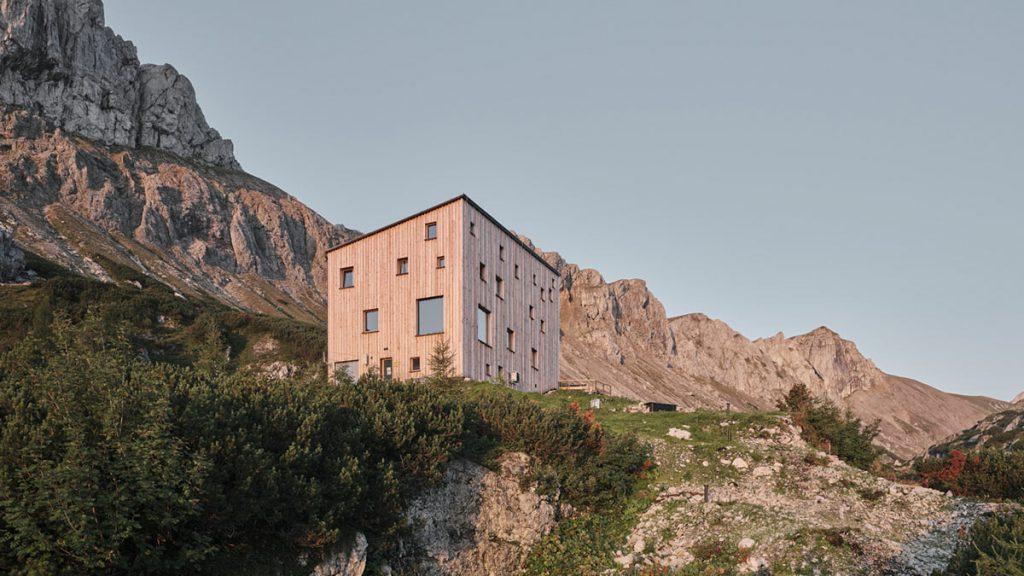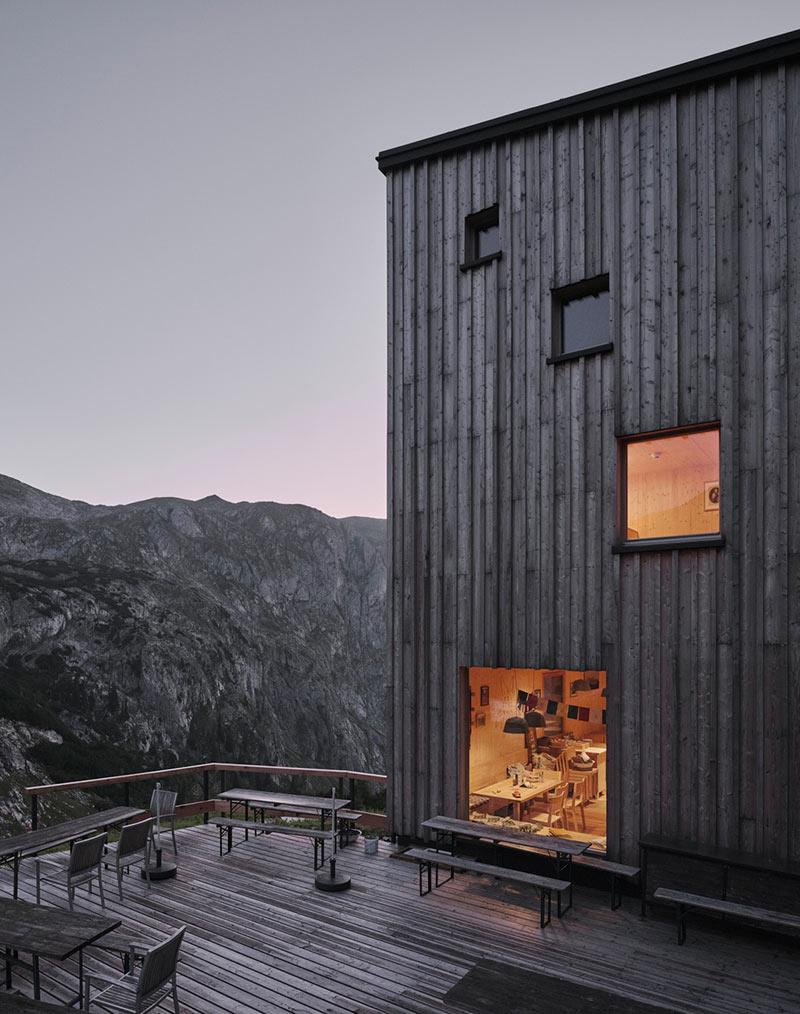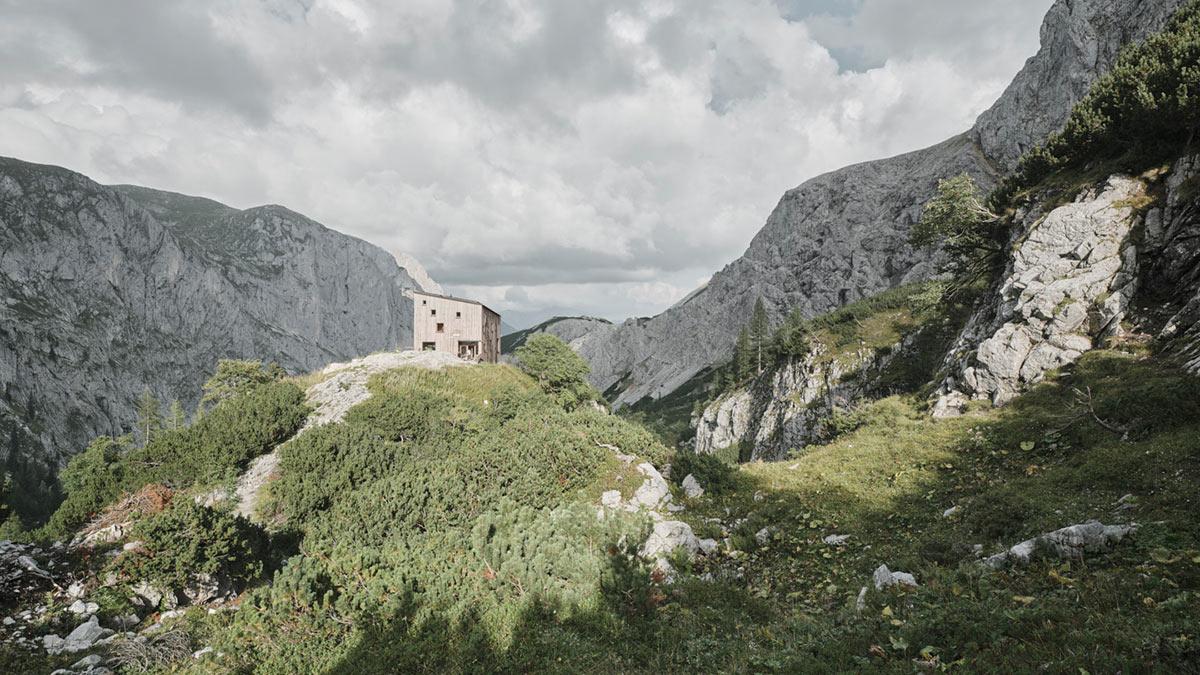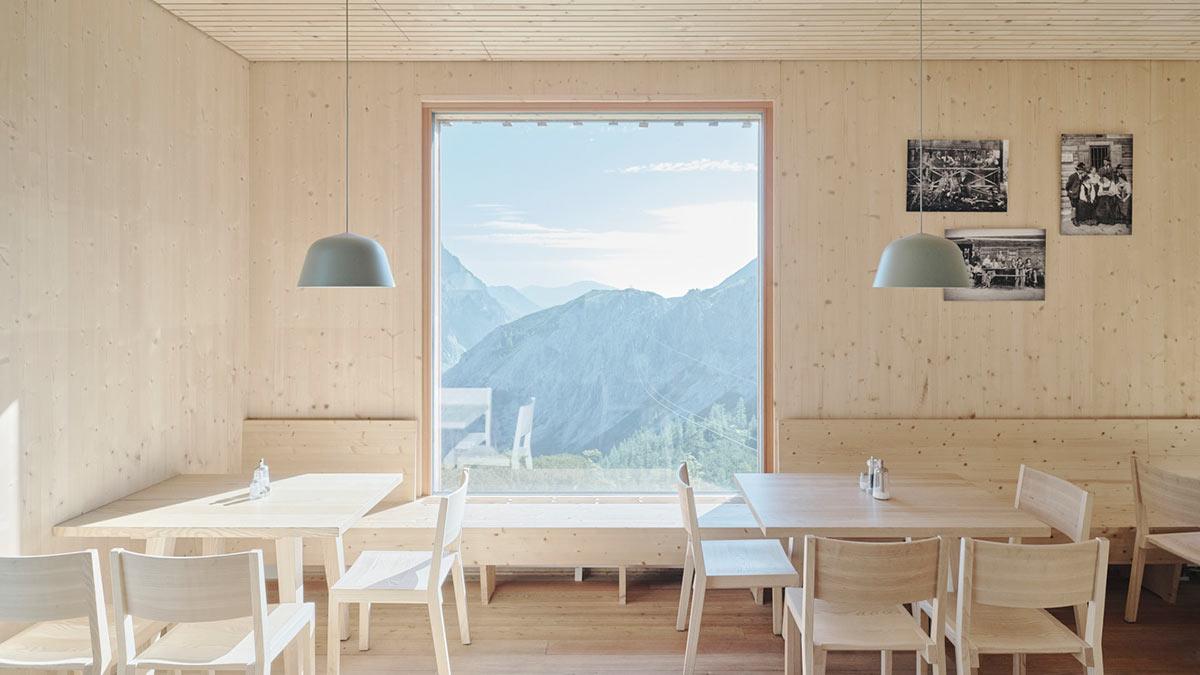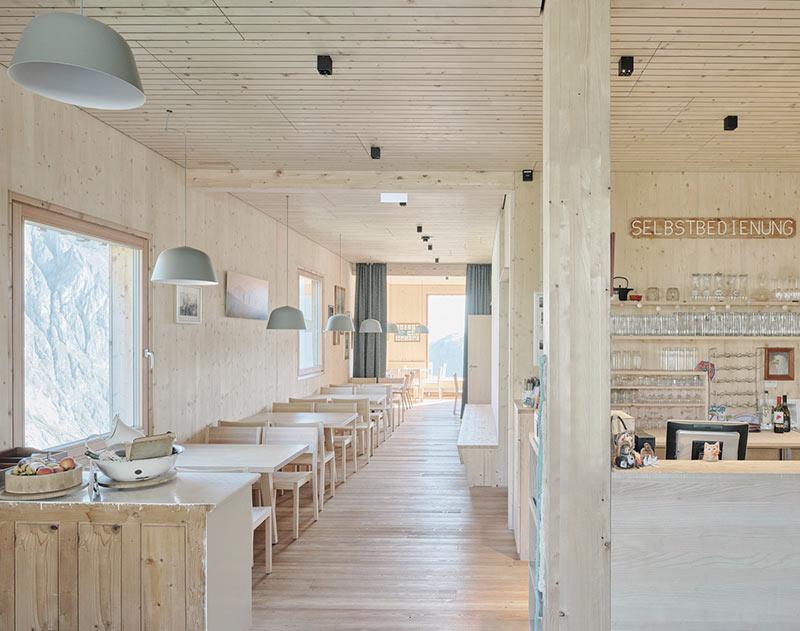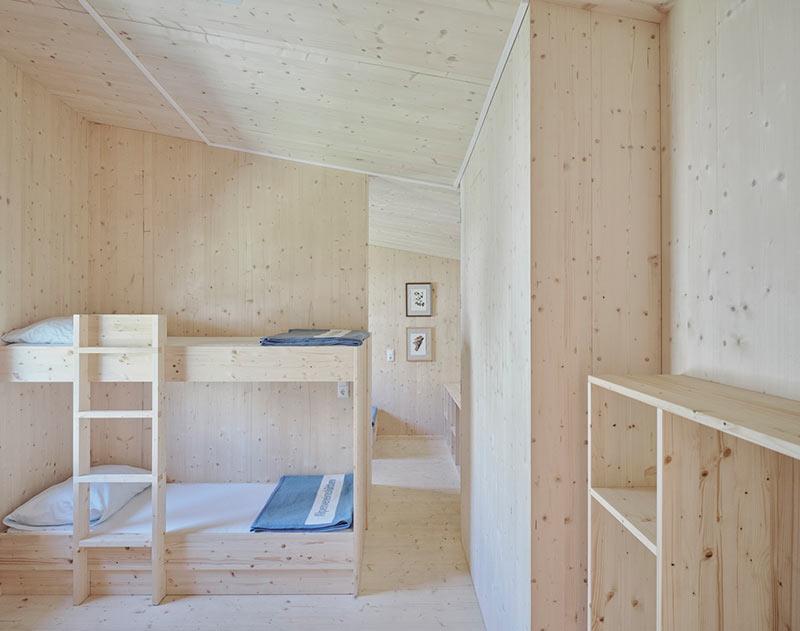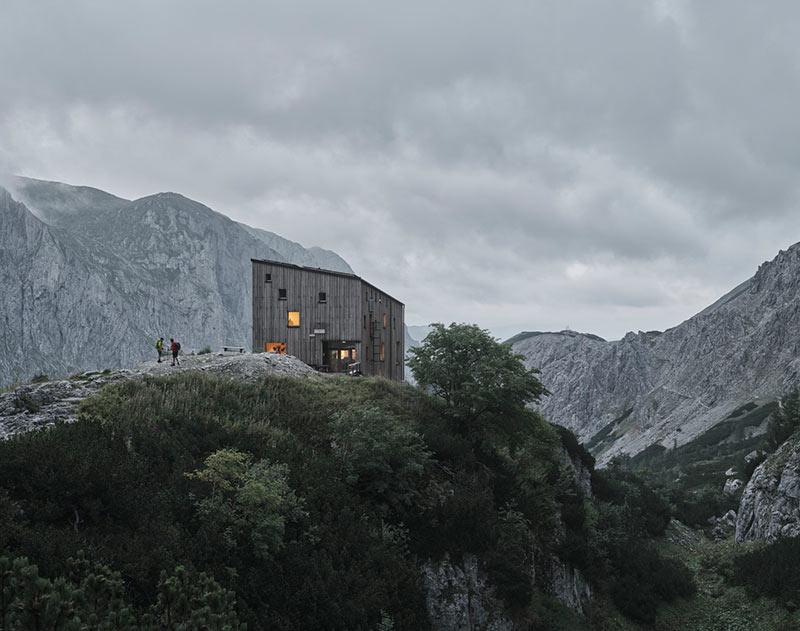Alpine architecture at its best
The recent rebuild of Voisthaler Hut in Austria’s Hochschwab Mountains uses structural timber design with sophisticated architectural and ecological features. This energy self-sufficient mountain hut designed by Dietger Wissounig Architekten has been awarded the “Umweltgütesiegel” and also won the 2023 BIG SEE Architecture Award.
Mountain huts have presumably been built in the Alps for as long as people have herded animals. These refuges offer protection against the storms in challenging terrain, far away from civilization. In the mid-19th century, with the arrival of tourists in the mountains together with the dawn of mainstream mountaineering, the first mountain huts started to offer food and drink high up in the Alps. One of these was the Voisthaler Hut (Voisthalerhütte) in the Hochschwab Mountains. The Österreichischer Alpenverein (Austrian Alpine Club) was responsible for its construction on 10 July 1898 in the high mountain valley of Obere Dullwitz in Styria. At the intersection of the long-distance hiking trails stretching from north to south and east to west, the hut is a point of orientation and a landmark visible from afar.
Over the decades, the log building was extended and adapted several times. But in recent years, an increasing shortage of water and stricter environmental regulations meant that a fundamental renewal was inevitable. Minimal difference in terms of the cost involved ultimately resulted in a new construction. The Alpine Club launched an architecture competition and organized a fundraising campaign to finance the project.
Resource-friendly timber construction
The winning design for the new Voisthaler Hut by Dietger Wissounig Architekten is a resource-friendly timber construction in an unostentatious, compact shape. “As a point of orientation between Hochschwab, Wetterkogel, Karlhochkogel and Fölzsattel, the new Voisthaler Hut appears as a simple, clear volume in the high alpine terrain,” the architects’ official description reads.
As a point of orientation between Hochschwab, Wetterkogel, Karlhochkogel and Fölzsattel, the new Voisthaler Hut appears as a simple, clear volume in the high alpine terrain.
Dietger Wissounig Architekten
Due to the remote location, all the building materials, machines and experts had to be flown in by helicopter, which required some serious logistical planning. It therefore made most sense to use a prefabricated timber structure, where the individual construction elements are entirely pre-produced at the timber engineering plant before being shipped to the building site. The individual elements were then put together by an assembly team at a height of 1654 metres above sea level.
Respect for the surroundings
The facade is made up of rough-sawn, natural larch battens with irregular vertical board and cover strip cladding. As exposure to the weather turns the wooden surface grey, the monolithic building will form a natural unit with its surrounding rocky landscape. The architects explain: “The hut will slowly merge with its surroundings – as a symbol of identity and culture.”
On the one hand, the simple, rectangular unit with its south-facing mono-pitched roof references the structure of the original and simplest typology of a mountain hut. Providing refuge in difficult terrain, mountain huts usually consist of three wooden walls and a roof that is slightly inclined towards the rear.
The hut will slowly merge with its surroundings – as a symbol of identity and culture.
Dietger Wissounig Architekten
On the other hand, the simple form results in a beneficial surface/volume radio that is crucial for the energy efficiency of buildings. The hut also looks quite unpretentious and appears willing to show respect for its location amid the impressive mountain landscape.
Close enough to touch
Continuing the theme from its exterior, natural wooden surfaces are dominant inside the hut as well, creating a warm and cosy atmosphere. A major advantage of the cross-laminated timber construction is that the surface of the interior walls required no extra treatment once the hut was built. Taking the same approach as the previous log construction, there was no need for any plastering or filler after assembly.
Instead of the small windows that were traditional a hundred years ago, the hut now boasts sweeping panoramic views. Guests enjoy the magnificence of the mountainous Alpine landscape stretching out into the distance through the floor-to-ceiling windows. It really seems like the craggy rocks on the surrounding peaks are close enough to touch.
Energy from the sun and rapeseed oil
This three-storey hut is a perfect example of how to deal consciously with resources – which applies not just to the design, but also to how the building is operated. The bivalent energy concept comprises solar power, buffer batteries and a block-type thermal power station that is powered by rapeseed oil. This is used when the amount of solar power available dips below necessary levels during periods of bad weather.
The rapeseed fuel is rapidly biodegradable, which helps protect the Alpine soil, water and living organisms. Diesel equipment, which is still used in mountain huts, will be gradually phased out.
The building is heated via a pump-fed hot water heating system that uses the waste heat from electricity production, the kitchen stove and flue tube. Its hot water pipes are installed as a circulation system, while a bio-sewage plant cleans the wastewater from the kitchen and sanitary facilities. In other words, the Voisthaler Hut is equipped with state-of-the-art technology and can fulfil the strictest environmental regulations.
In 2022 the Voisthaler Hut was awarded the “Umweltgütesiegel” environment quality seal for Alpine Club mountain huts. It also received the 2023 BIG SEE Award in the tourism architecture category. This latter award is presented for outstanding services to architecture, interior design, wood and creative tourism in south-eastern Europe.
Text: Gertraud Gerst
Translation: Rosemary Bridger-Lippe
Photos: David Schreyer
